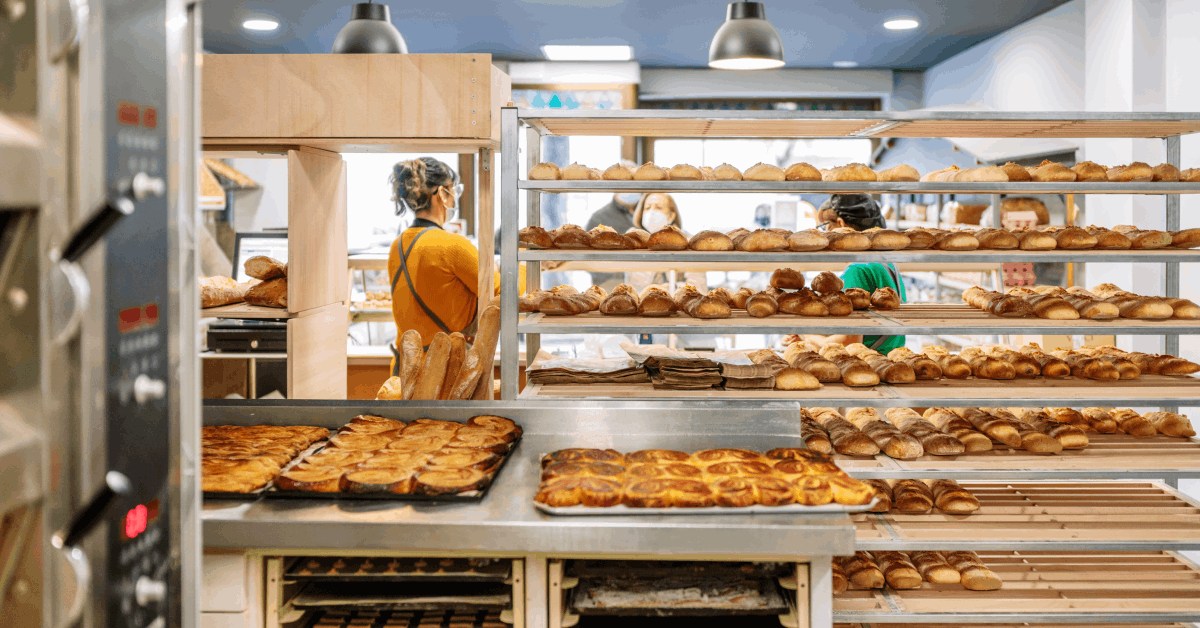Australia’s bakery sector has long been a cornerstone of local communities; delivering more than just bread, pastries, and coffee. Yet, in 2025, many small bakeries are finding it harder than ever to stay profitable. Rising ingredient costs, energy prices, and tax obligations have placed enormous pressure on business owners.
“True debt relief for local bakeries isn’t just about dollars. it’s about people. Protecting jobs and community trust gives a business the foundation it needs to rebuild.” – John Morgan, Director.
In this climate, debt relief for local bakeries has emerged as a practical and necessary lifeline. This article explores how one family-run bakery business overcame financial challenges through professional restructuring, strategic reforms, and a renewed focus on operational efficiency. Their journey offers valuable lessons for small businesses across Australia’s food industry.
Understanding the Pressures Facing Local Bakeries
Small bakeries face unique financial challenges that differ from other retail businesses. Their margins are narrow, overheads are high, and cash flow is easily disrupted by small fluctuations in supply costs or sales.
The case in focus began with increasing supplier debts, ATO obligations, and delayed customer payments. Like many small operators, the owners initially tried to manage these issues internal, cutting hours, delaying expenses, and hoping for a turnaround. But as debts grew, it became clear that debt relief for local bakeries was the only sustainable way forward.
Recognising financial strain early gave this business time to act before liquidation became inevitable.
The Small Business Restructuring Framework
Introduced by ASIC and the Australian Government, the Small Business Restructuring (SBR) framework allows eligible businesses to work with a professional restructuring practitioner to negotiate with creditors while continuing to trade.
For bakeries, this offers critical advantages:
- Directors remain in control of operations.
- Creditors can’t enforce new legal actions during the process.
- Debts are consolidated into one manageable repayment plan.
- Business continuity and community trust are maintained.
In this case, the bakery implemented the SBR framework under the guidance of experienced advisors. The process of debt relief for local bakeries provided time, structure, and legal protection to help the business recover.
Creating a Realistic Repayment Plan
The first step in any restructuring plan is creating a proposal that balances the bakery’s repayment capacity with creditor expectations.
The owners worked closely with their restructuring practitioner to:
- Assess total liabilities, including ATO, supplier, and lease arrears.
- Identify core income streams (bread wholesale, café sales, catering).
- Model future cash flows based on realistic growth projections.
- Negotiate repayment terms creditors could accept.
By presenting a credible proposal, the bakery won the support of both the ATO and key suppliers. This is a defining feature of debt relief for local bakeries, when creditors trust the process, recovery becomes collaborative rather than combative.
Operational Reforms and Cash Flow Improvements
Financial recovery is only possible with operational reform. During the restructuring process, the bakery made practical adjustments that improved efficiency and restored cash flow stability:
- Inventory management: Reduced waste by improving production forecasting.
- Supplier agreements: Renegotiated delivery schedules and payment cycles.
- Energy efficiency: Installed cost-saving equipment to reduce power bills.
- Pricing review: Adjusted retail prices modestly to align with inflation.
These initiatives not only stabilised the business but also increased profitability post-restructuring. In the broader context of debt relief for local bakeries, these measures show that operational discipline is as vital as financial negotiation.
Protecting Staff and Community Reputation
Local bakeries thrive on loyal customers and dedicated employees. Maintaining both during a financial crisis can make the difference between recovery and closure.
This business placed a strong emphasis on communication. Staff were informed about the process, customers were reassured of continuity, and suppliers were updated on progress.
By prioritising transparency and empathy, the bakery retained all key staff members and preserved its strong local reputation. This approach ensured that when the restructuring was complete, the business didn’t just survive, it continued to thrive.
Lessons for Bakery Owners in 2025
The experience of this bakery highlights important lessons for others facing similar challenges in 2025:
- Act early: The earlier financial distress is identified, the more options exist for recovery.
- Be transparent: Openness with creditors and staff builds trust and reduces resistance.
- Seek expert help: Licensed restructuring professionals provide structure and compliance confidence.
- Focus on systems: Better accounting and forecasting prevent future setbacks.
- Embrace innovation: Expanding online orders, delivery, or catering can diversify income streams.
Every successful debt relief for local bakeries story begins with recognising the problem, and acting before it’s too late.
Post-Restructuring Recovery and Growth
Emerging from restructuring, the bakery was stronger, leaner, and more financially disciplined. With debts under control and operations optimised, the owners could focus on growth again.
They reinvested profits into marketing and modernising their shopfront, attracting new customers and regaining financial confidence. More importantly, the experience created a roadmap for sustained success, one grounded in resilience, accountability, and smarter management.
The outcome demonstrates that debt relief for local bakeries doesn’t just erase debt, it creates a foundation for renewal.
The Bigger Picture: Bakery Industry in Transition
The bakery industry continues to evolve. Consumers are shifting toward artisanal and convenience-driven options, while competition from supermarkets grows. Energy costs and labour shortages remain ongoing challenges.
In this environment, debt relief for local bakeries provides not just survival but strategic transformation. By addressing structural weaknesses and rebuilding from within, small bakeries can future-proof their operations and maintain their essential role in local economies.
Final Thoughts
Financial hardship doesn’t have to mark the end of a bakery’s story. With the right support, guidance, and structure, even the most challenging debt situations can lead to new beginnings.
Debt relief for local bakeries gives owners the breathing room to rebuild. When handled with professionalism and care, it turns crisis into opportunity.
For small bakeries across Australia, the key to longevity lies in facing financial challenges early and taking action with confidence and clarity.

